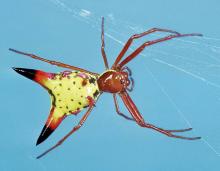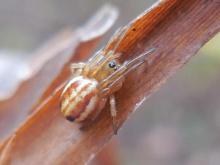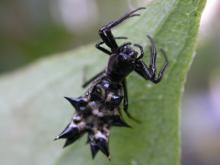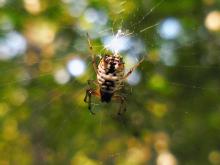Media

Species Types
Scientific Name
Micrathena sagittata
Description
One of three micrathena spiders in Missouri, the arrowshaped micrathena is small but unforgettable. Females have striking reddish, black, and yellow colors, and a pair of outward-pointing tubercles at the end of the body give it a triangular or "arrow" shape.



























